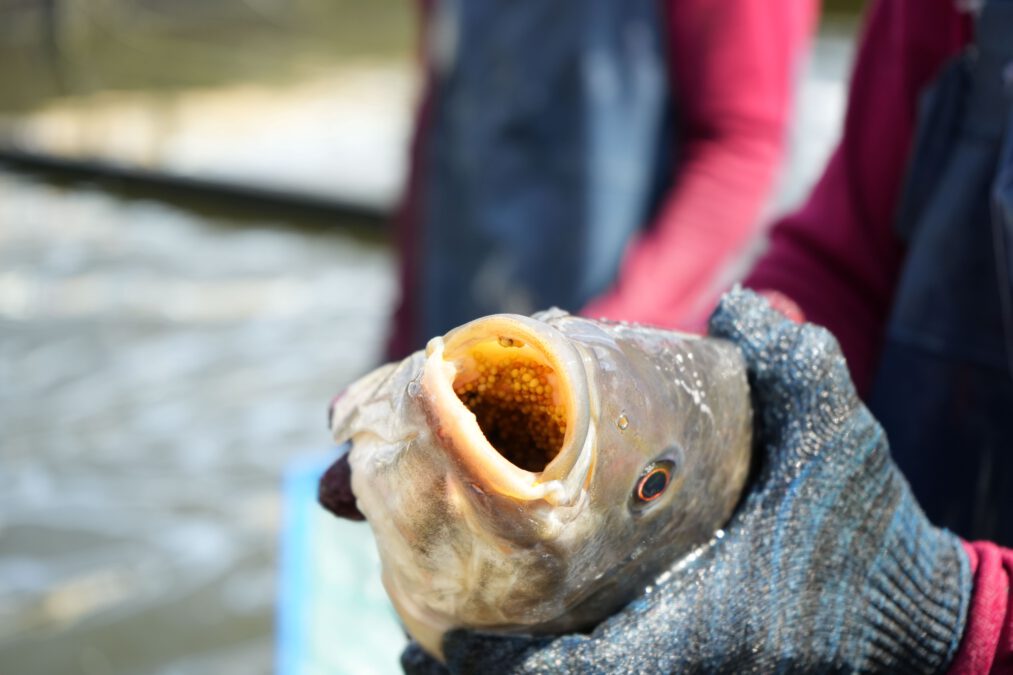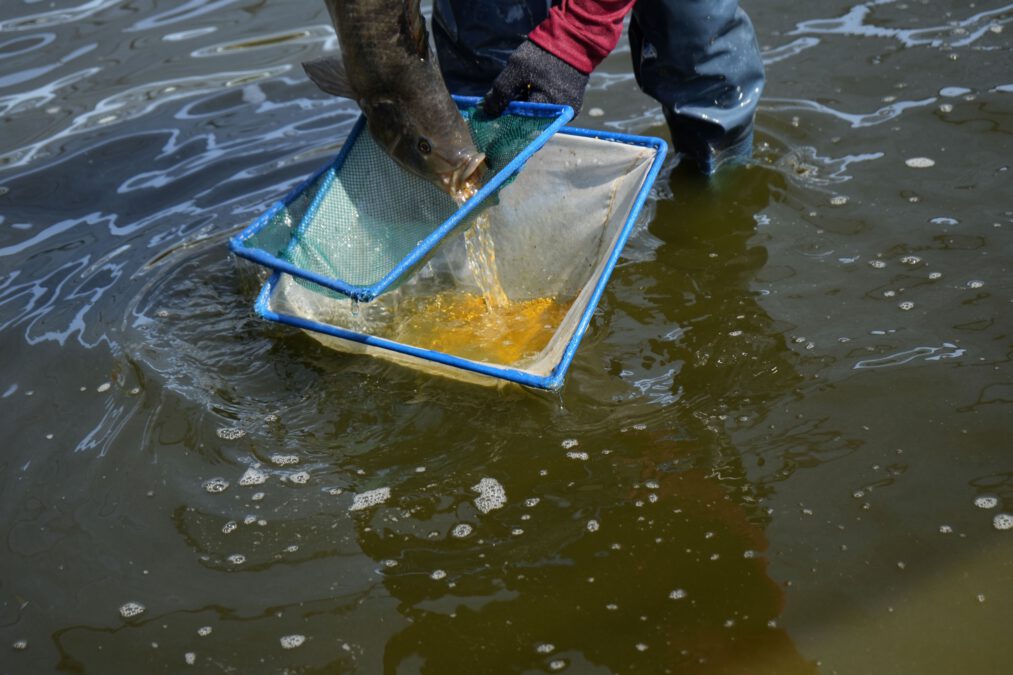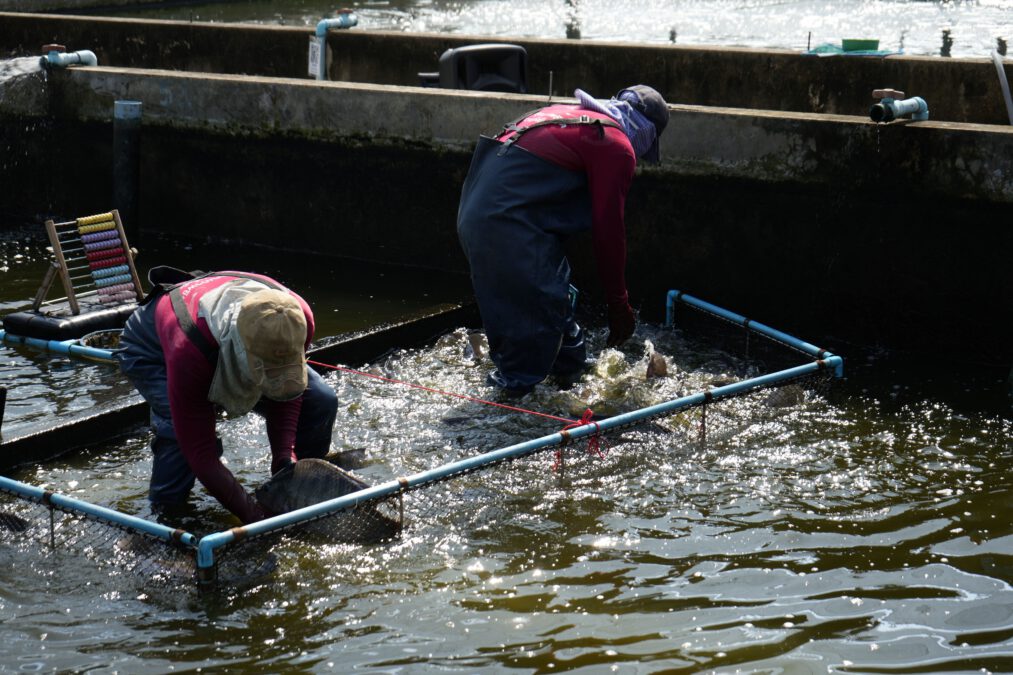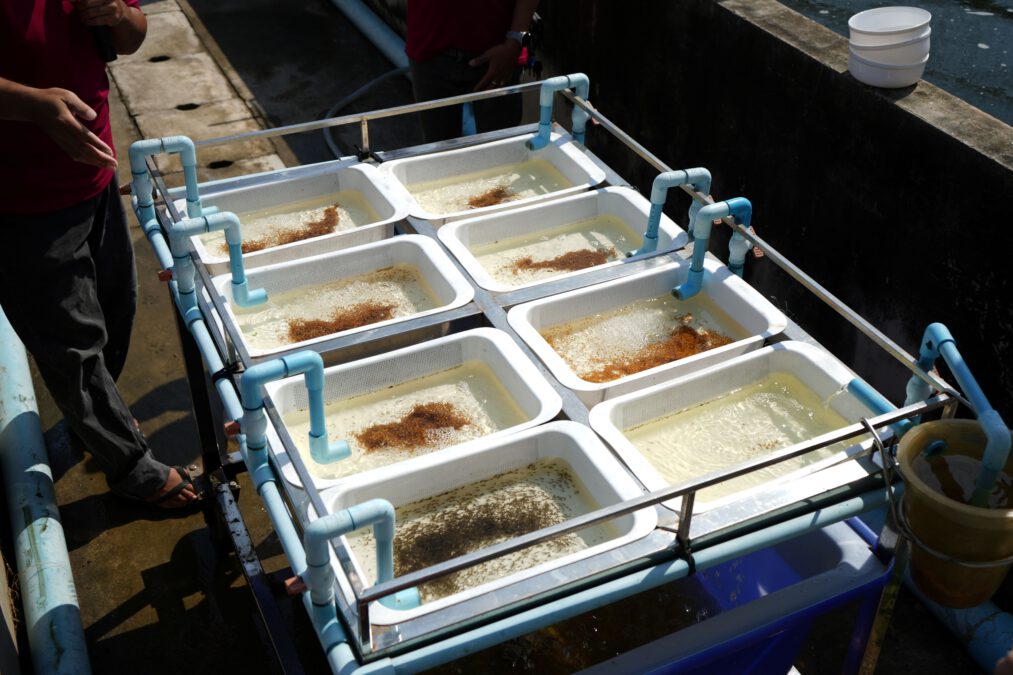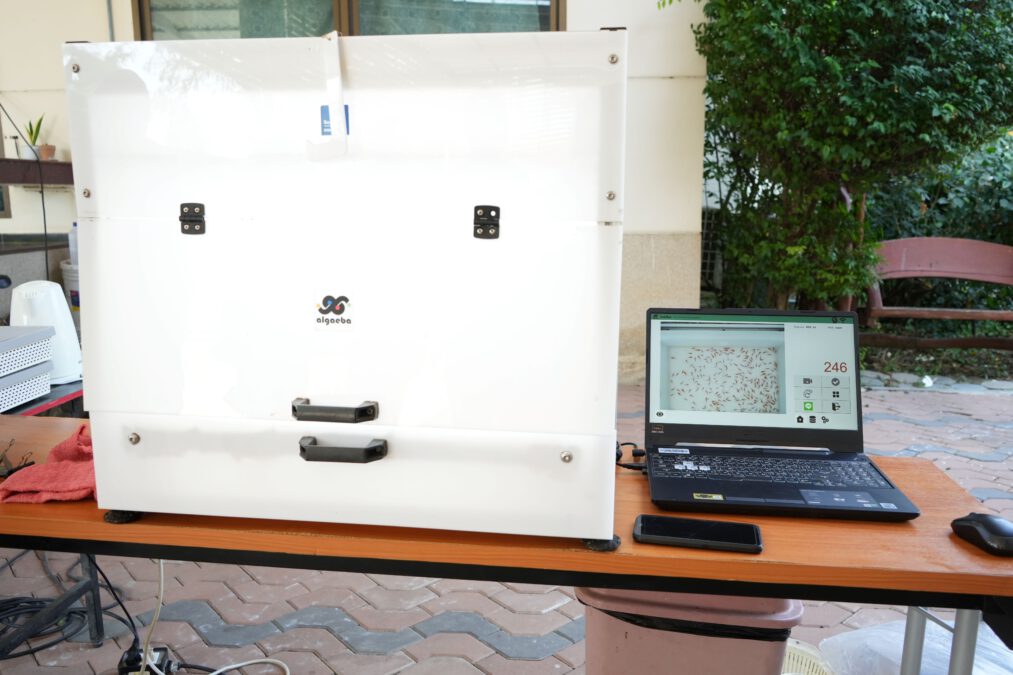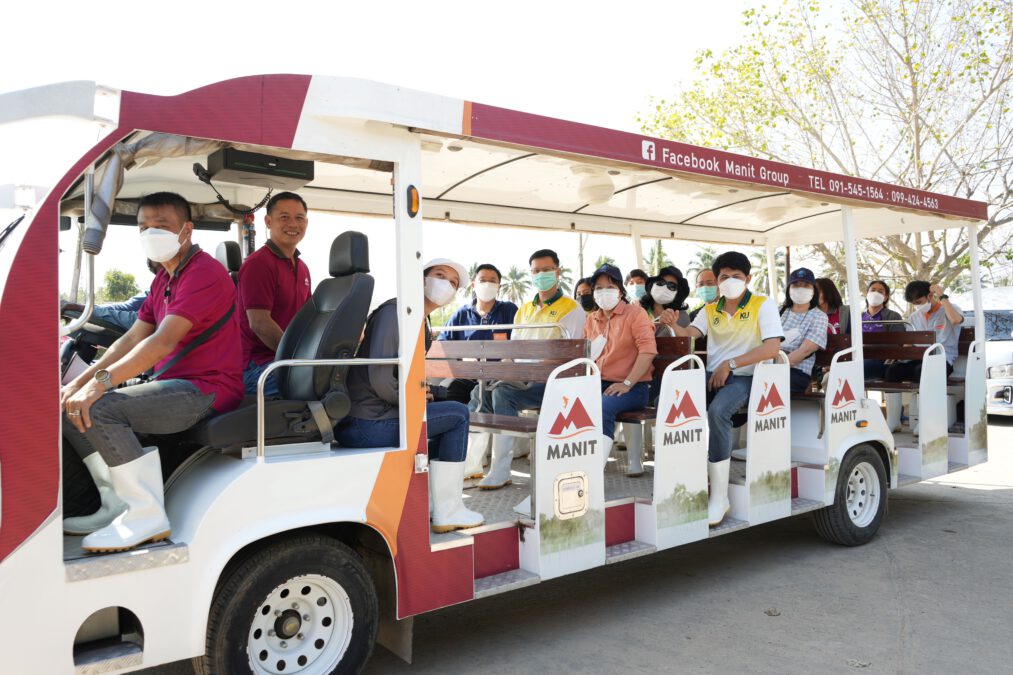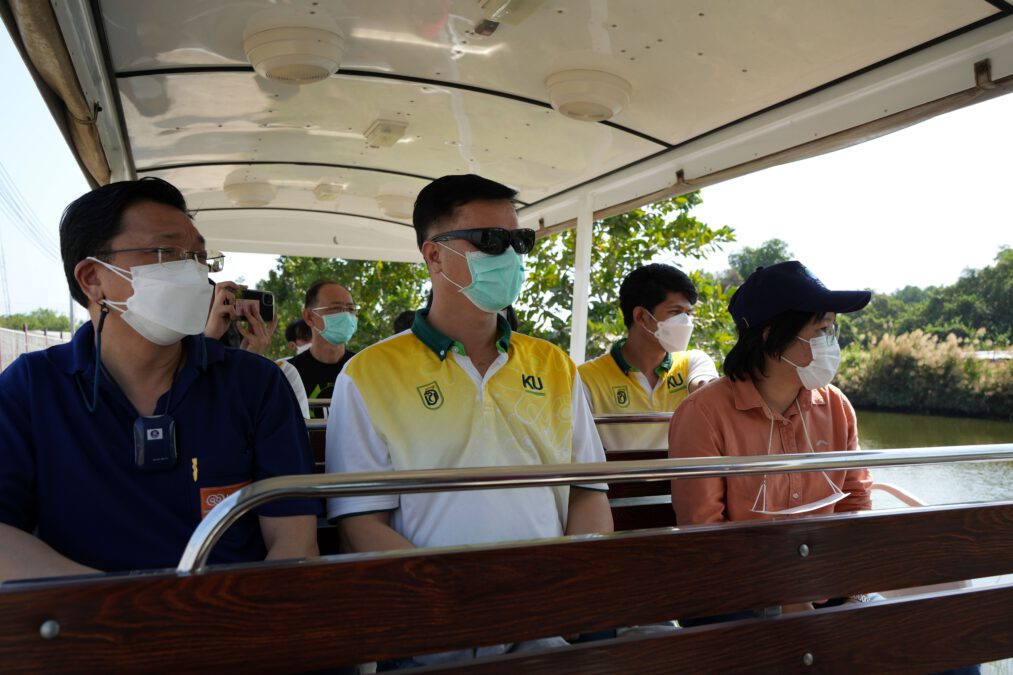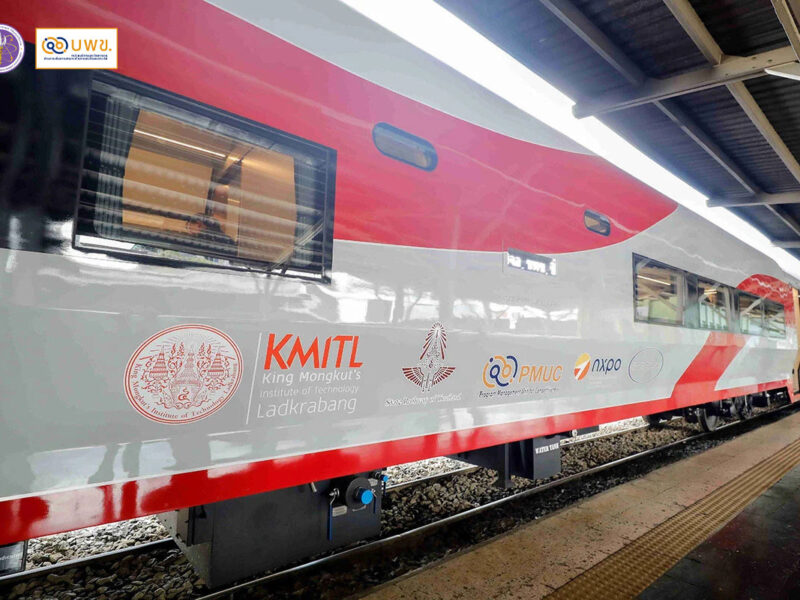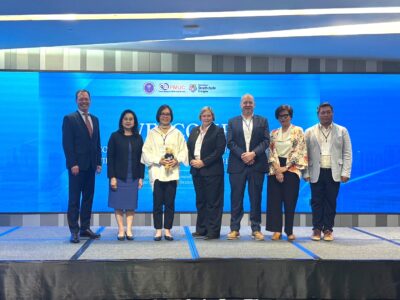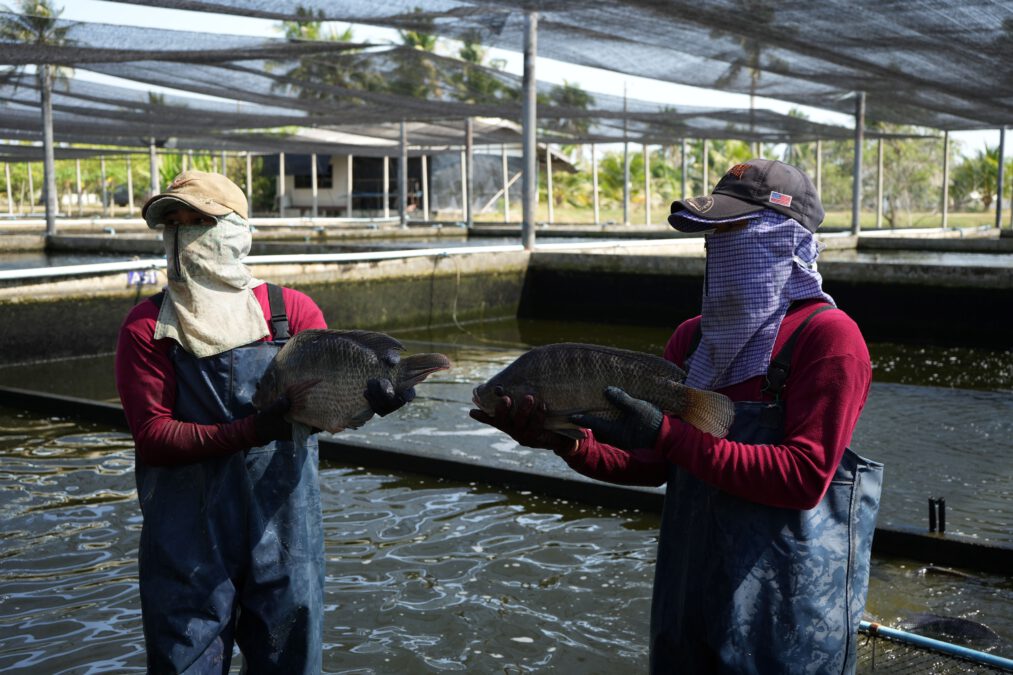
Today the “Tilapia fingerlings” industry is highly competitive. Entrepreneurs are interested in developing technologies and making use of the information available to assess genetic competence for economically important traits e.g. disease resistance, growth rate, survival rate, etc. in order to screen for tilapias that have good genetic properties and the ability to generate returns or profits for farmers.
Tilapia is the number one freshwater fish that has been widely accepted by farmers throughout the country. Before the epidemic of the Coronavirus 2019 in 2018, Thailand had an overall production of tilapia of 216,600 tons (valued at 10,141 million baht), accounting for 51% of the country’s total freshwater production. (Fishery Statistics, 2018) Tilapia production from Thailand is exported to countries in the ASEAN (37%), Middle East (27.4%), Europe (16.9%), America (16.1%) and others (5.1%). In that year, about 1,155.2 million tilapia fingerlings were used to start production. Many governments are interested in it and initiated projects to promote and support mass tilapia aquaculture. The market for tilapia is valued at more than US$1.4 billion in 2018 and is expected to reach US$2.1 billion by 2025, with an expected compound annual growth rate of 5.5%. Main markets are North America, Europe, and Asia-Pacific. And with advances in genetic technology and breeding, opportunities for competition in production and marketing are likely to arise in the near future. Preparing to compete internationally and maintain the existing tilapia market therefore presents new challenges for the production and trade competitiveness of entrepreneurs and the Thai government.
The situation of the Coronavirus 2019 epidemic may have had some impact on the business and the overall market for tilapia products, but the demand for “Tilapia fingerlings” for the aquaculture business continues to exist and will increase as the covid situation eases, especially the demand for tilapia fingerlings with economically important characteristics (such as survival rate, growth rate, physical specs, etc.) stand out in this regard. Therefore, breeders or farmers of genetically engineered tilapias, as well as business consulting service providers, are focused on the development of modern technologies and the utilization of genomic genetic information in the form of digital data, which is considered the main competitor in the fingerlings production. However, due to the diversity, relationship, expression and genetic inheritance of tilapia that are population specific, the development of technology and the utilization of genomic genetic information therefore is inherently “population specific”, which in terms of competition or providing business services, most of the information and details cannot be disclosed to the general public.” Therefore, supporting the development and sharing of genomic and other useful information, not only helps to increasing the competitiveness of the busienssses engaging in fingerlings farming, it can also help those breeders of tilapias both in Thailand and abroad. (target customers) who will also have the opportunity to take advantage of “Tilapia fingerlings” to increase profits from producing mature tilapias with good qualities that can meet the demand of the market, ultimately pushing the Thai tilapia production industry as a whole to be stronger and more sustainable long-term.
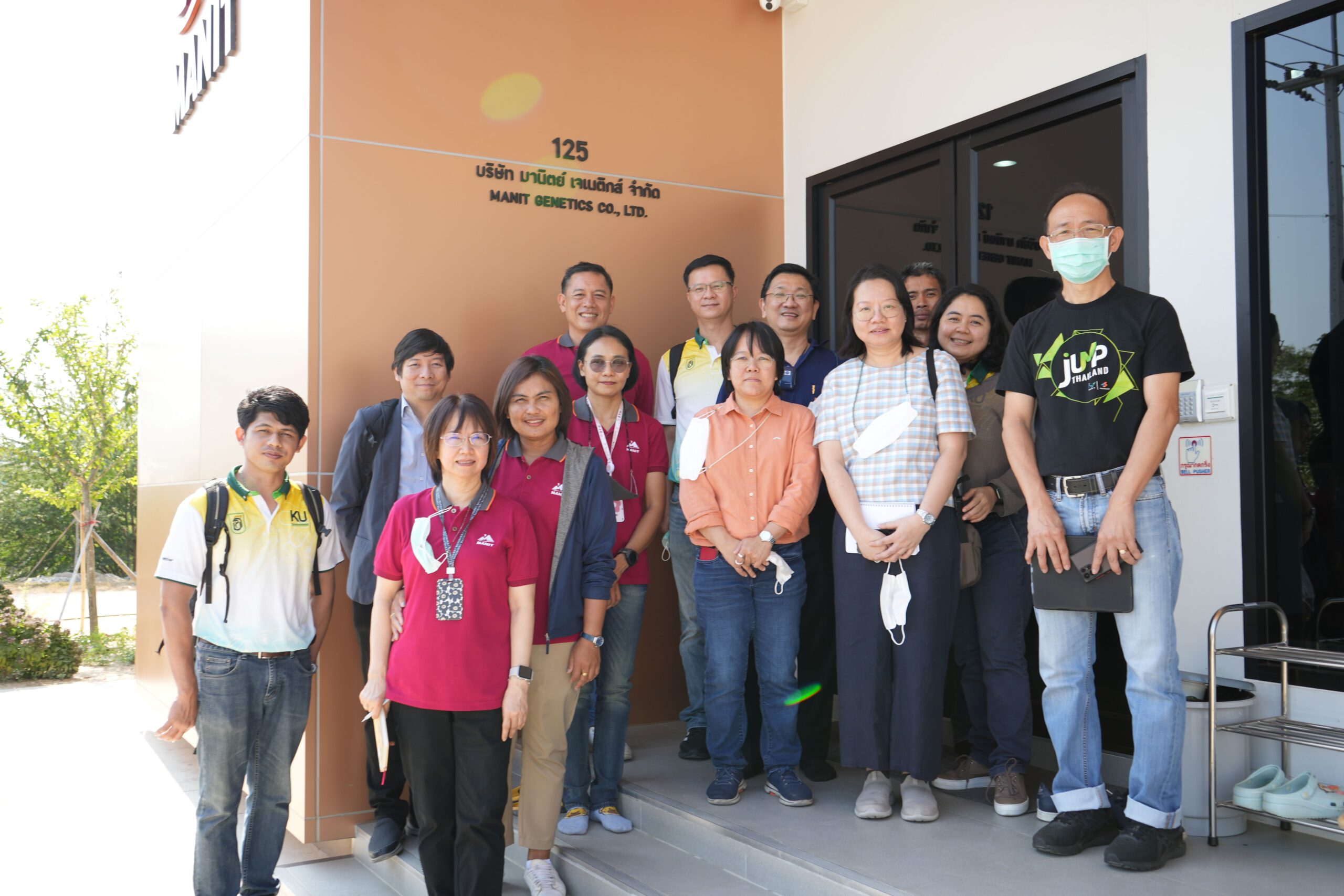
On January 18, 2023, the Program Management Unit for Competitiveness (PMUC), led by Assoc. Prof. Thongchai Suwansichon, Ph.D., deputy director of PMUC, along with the Digital Platform Subcommittee, PMUC, and staff, visited the area to follow up on the progress of the project “Technology development and utilization of genomic genetic information to increase the competitiveness of the Thai tilapia business” at Manit Genetics Co., Ltd., Phetchaburi Province.
The project focuses on the development of Genomic Evaluation (GEBV) and Genomic Selection technologies for improving the economically important traits of Thai tilapia with high accuracy. This is very helfpul in the prediction and estimation to support decision making in the selection of tilapia breeders and broodstock for use in the production of tilapia fingerlings with the desired traits. This project is a collaboration between a research team from Kasetsart University and Manit Genetics Co., Ltd. (an investor), with Assoc.Prof. Sakorn Khunawutrittiron, Ph.D., as the project leader under the funding support from the PMUC in the Digital Platform program.
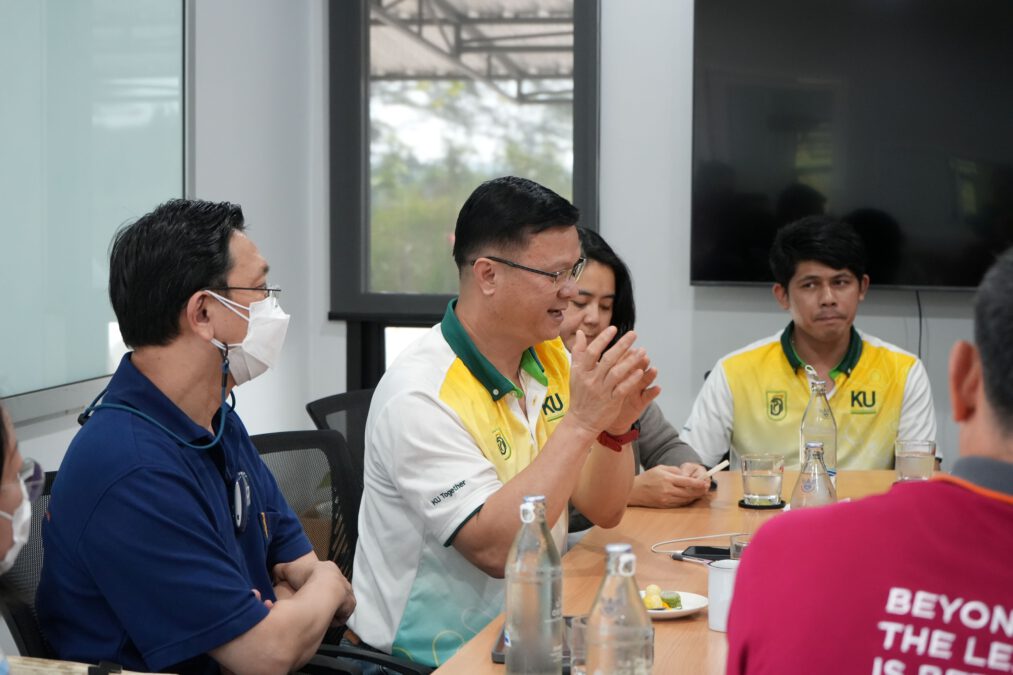
Assoc.Prof. Sakorn Khunawutrittiron, Ph.D., the research team leader explained the technology for selecting tilapia species that “In the past, in the selection of tilapia breeders, most operators make use of traditional technology, which was the linear forecast model called the Best linear unbiased prediction (BLUP) technique, which was based on species history and appearance of each tilapia raised in different environments. But with the advancement of genetic technology and molecular science, we are now able to determine the genetic profile (Genotyping) at the genome level, which costs less than in the past. In this work, we utilized genetic information at the genome level of each tilapia in conjunction with breed history and appearance information in order to classify the genetic diversity of tilapia. Evaluating and testing the value of individual genomic loci contributing to economically important traits. and using those valuable genomic genetics to develop a genetic model. We have developed new technologies for storing, managing and utilizing large amounts of data such as genetic profile information, economically important characteristics, genome genetic information, management and environment information and other information about each tilapia, to be able to accurately predict and estimate genetic (genomic) abilities. It supports decision-making on matters related to the development of genetic potential for economically important traits to be distinguished. It has attracted attention to the use of tilapia fingerlings and help the business to compete internationally.”
The major challenge in tilapia fingerlings production is the supply shortage. “Tilapia with good genetic properties (such as fast growth rate, high survival rate, disease resistance, good carcasses)” are quite rare, which entrepreneurs often produce insufficiently to meet the needs of farmers. In addition, with the advancement in technology and the ability to utilize data, tilapia genetic producers and consulting firms are accelerating the development of techniques for genetic improvement of tilapia to have outstanding properties. This will help the Thai industry to compete and seize market share and to be a global producer which can dictate specific production requirements. In this regard, if tilapia genetic producers in Thailand are not able to accelerate technology development and make use of large amounts of data to make accurate decisions in developing the genetic potential of tilapia, and to have the genetic competence for economically important traits to stand out or compete with competitors in the international market in a timely manner, Thailand may lose the opportunity to compete and thus become disadvantaged against competition. Thai businesses would then have to buy expensive genetics to use conditionally as already evidient in the commercial poultry production industry.
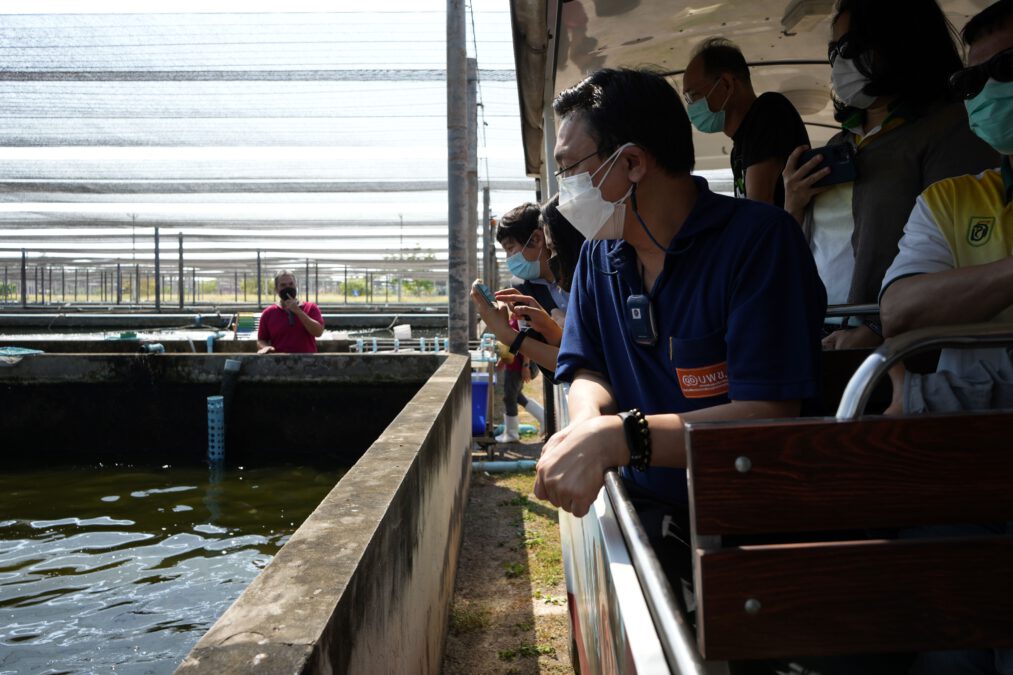
Assoc. Prof. Thongchai Suwansichon, deputy director of PMUC, spoke about their views on supporting research funding in this project saying, “the PMUC sees this project as a data innovation development for BCG in agro-food technology to increase the competitiveness of the Thai tilapia business that will be applied in practice in the production of “tilapia fingerlings” and other economic aquatic animals in Thailand. And with the development of technology and utilization of genetic information, the genomics data has been attracted and exploited by business competitors in other countries as well. Missing the opportunity to develop technology may contribute to inability to compete of the Thai tilapia business with more obstacles and challenges.”
In this project, digital technology has been developed to play an important and useful role in (1) enhancing efficiency in the collection, management and utilization of pedigree data, phenotypic data and genetic profile at the G level (genomic data, SNPs), as well as management, environment, and other related information for farm management and business competition; (2) increasing the ability to link data facilitates useful hypothesis testing; (3) increasing accuracy and reliability in estimating or predicting values related to the hypothesis of interest, for example, estimating the variance components for the trait of interest (Variance component estimation), genomic evaluation for the trait of interest, evaluation of achievement or progress in breeding (Genetic progress), and evaluation of selection response, etc. (4) Reduction of bias in comparison and consideration of issues between different generations of tilapias handled differently which will be beneficial to (5) the development of necessary infrastructure, to increasing the efficiency of tilapia fingerlings production, and to the potential for commercial competition.
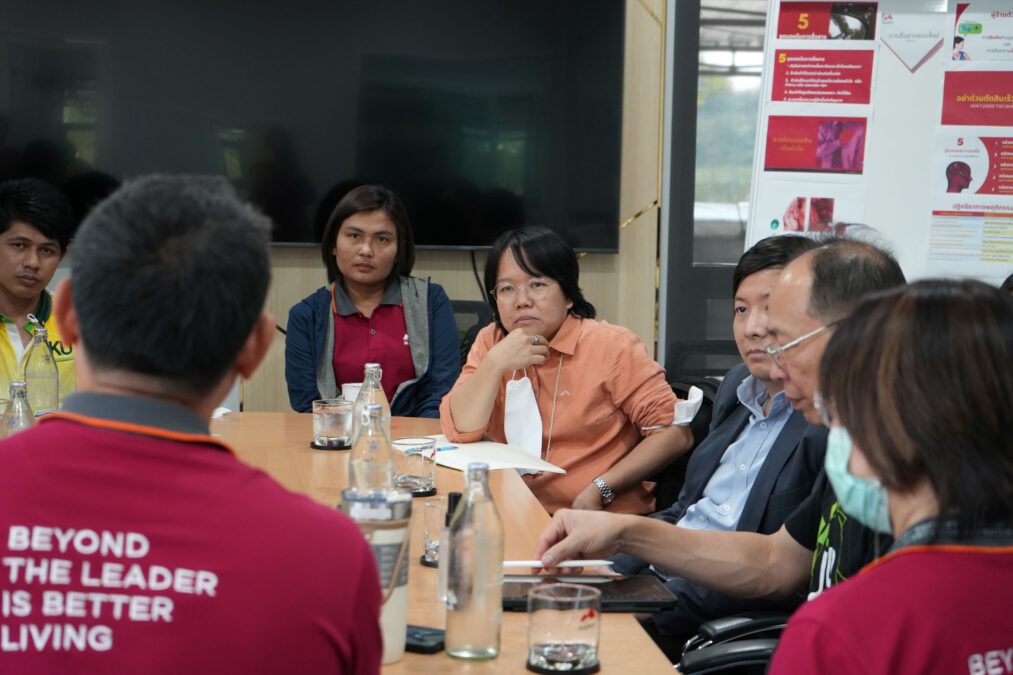
Prof. Wannarat Santiamornthat, Ph.D., chairman of the Digital Platform Subcommittee, PMUC, added that “Data plays a critical role in decision-making accuracy and supports business competitive advantage. Efficient data management will help businesses in effective decision-making and increasing competitiveness. This project has provided funding for the development of digital technology that will help in data storage and management. The data that the researchers collected from tilapia is enormous in order to help analyze, evaluate, determine the genetic sequence of the complete DNA of the genome, in turn helping to determine the genetic profile of Thai tilapia. The aim is to facilitate the most effective genetic management of Thai tilapia and elevate the competitiveness of the Thai fishery induary with technology and innovation in the utilization of genomic genetic information.”
If this project is successful, it will result in the entrepreneurs of “Thai tilapia fingerlings” having the ability to compete in the tilapia business by being able to develop tilapia genetics to have economic characteristics which are inline with the needs of the customers in a more consistent and timely manner. Additionally the goal is to improve on customer satisfaction and confidence, in the quality of tilapia genetics being developed with contemporary technology by more entrepreneurs, who are able to develop effective workforce, information, systems and digital technologies, which are compatible with conditions, limitations and specificity to their production management inputs for efficient and cost-effective commercialization. In addition, entrepreneurs can continuously accumulate digital data (such as tilapia breeders, management of breeding environments, etc.), and ultimately be able to use such digital information to increase production efficiency, maximize genetic potential and the ability to compete cost-effectively and sustainably.

